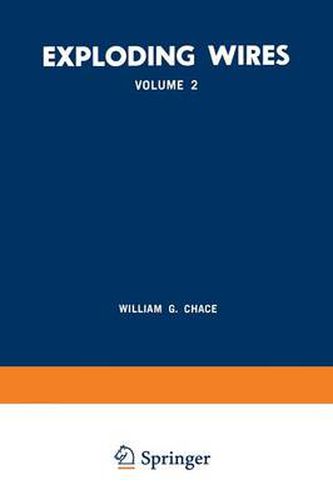Readings Newsletter
Become a Readings Member to make your shopping experience even easier.
Sign in or sign up for free!
You’re not far away from qualifying for FREE standard shipping within Australia
You’ve qualified for FREE standard shipping within Australia
The cart is loading…






This title is printed to order. This book may have been self-published. If so, we cannot guarantee the quality of the content. In the main most books will have gone through the editing process however some may not. We therefore suggest that you be aware of this before ordering this book. If in doubt check either the author or publisher’s details as we are unable to accept any returns unless they are faulty. Please contact us if you have any questions.
This volume contains the proceedings of the Second Conference on the Exploding Wire Phenomenon. In addition to the general theory of exploding wires, this conference considered exploding wire shock waves; the generation by exploding wires of extreme tem peratures, X-rays, and very high pressures; instrumentationprob lems in wire explosions; and, for the first time, exploding foils. Sponsored by the Geophysics Research Directorate ofthe Air Force Cambridge Research Laboratories, this symposium was held in Boston, Massachusetts, on November 13 and 14, 1961. To fill a definite need for ready access to information, Volume Two of Exploding Wires contains a comprehensive index which should facilitate the use of both volumes on the exploding wire phenomenon. It is not possible to express full appreciation to all those whose generous assistance made the Second Conference and this volume possible. It is certain, however, that without the cooperation of Dr. John N. Howard, Laboratory Chief, and Mr. Morton A. Levine, Branch Chief, there could have been no conference. Special ac knowledgment goes to the Staff of the Hydromagnetics Laboratory for its invaluable aid: to Mrs. William Watson for exceptional secretarial work; to Mr. E. H. Cullington for technical assistance; to Mr. C. V. Fish for drawings, graphs, and art work; and to Mr. K. R. Saari for photography. Particular gratitude is due to Mr.
$9.00 standard shipping within Australia
FREE standard shipping within Australia for orders over $100.00
Express & International shipping calculated at checkout
This title is printed to order. This book may have been self-published. If so, we cannot guarantee the quality of the content. In the main most books will have gone through the editing process however some may not. We therefore suggest that you be aware of this before ordering this book. If in doubt check either the author or publisher’s details as we are unable to accept any returns unless they are faulty. Please contact us if you have any questions.
This volume contains the proceedings of the Second Conference on the Exploding Wire Phenomenon. In addition to the general theory of exploding wires, this conference considered exploding wire shock waves; the generation by exploding wires of extreme tem peratures, X-rays, and very high pressures; instrumentationprob lems in wire explosions; and, for the first time, exploding foils. Sponsored by the Geophysics Research Directorate ofthe Air Force Cambridge Research Laboratories, this symposium was held in Boston, Massachusetts, on November 13 and 14, 1961. To fill a definite need for ready access to information, Volume Two of Exploding Wires contains a comprehensive index which should facilitate the use of both volumes on the exploding wire phenomenon. It is not possible to express full appreciation to all those whose generous assistance made the Second Conference and this volume possible. It is certain, however, that without the cooperation of Dr. John N. Howard, Laboratory Chief, and Mr. Morton A. Levine, Branch Chief, there could have been no conference. Special ac knowledgment goes to the Staff of the Hydromagnetics Laboratory for its invaluable aid: to Mrs. William Watson for exceptional secretarial work; to Mr. E. H. Cullington for technical assistance; to Mr. C. V. Fish for drawings, graphs, and art work; and to Mr. K. R. Saari for photography. Particular gratitude is due to Mr.